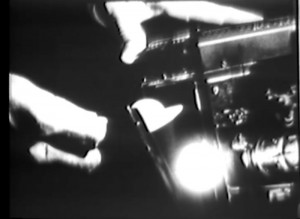
"On camera techniques. Illustrates poor photographic scenes, what caused them, and how to avoid them." National Archives.
"doc. turistico"/tourism documentary
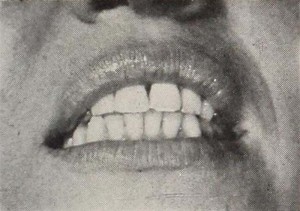
"In A Complete Immediate Denture Technique for the General Practitioner, Dr. James E. Bliss offers a striking example of how skillfully motion picture technique may be adapted to a subject as highly specialized as dentistry. An intelligent and systematic scheme of varying camera positions serves to present detailed material in as effective a manner as possible. Unhampered by the conventional idea, that the camera should rarely be shifted from one viewpoint to another when making such a film, Dr. Bliss has approached the subject with a plan of shooting sequences just as if he were making a dramatic film. The whole scheme of shots is simply considerably closer than it would be in the case of an ordinary subject. The result gives a feeling of unity and assures one that he is not looking at a series of movie slides. The ultra closeups in color are among the finest that have ever been filmed and, because of excellent lighting and precise focus, they make an outstanding teaching film." Movie Makers, Dec. 1939, 636.
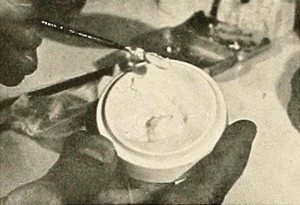
"It is probably safe to say that nowhere in the world has been made a dental picture more perfect in detail than Complete Operative and Prosthetic Technic for Porcelain Jacket Crown Restorations. Dr. Milton Cohen has portrayed this highly intricate and skilled dental project in superb Kodachrome closeups. Not only do the ultra close shots of the work in the oral cavity achieve great fidelity as to color, but also the many operations in the dental laboratory are filmed with equal expertness. Certain steps in the procedure are portrayed by the use of heroic steed models, and these scenes were smoothly integrated with the scenes taken in the mouth of the living model. Although treating of a subject necessarily highly technical in nature, the titles were so well written that they made the film clear to a layman. The picture is distinguished by even exposure, sharp focus, good lighting and excellent camera angles. It is interesting to note that Dr. Cohen not only made the picture but also did all the work shown in it." Movie Makers, Dec. 1937, 603.
"doc. turistico"/tourism documentary
"doc. turistico"/tourism documentary
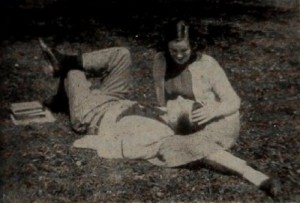
"Concerto, by Warren Doremus, is a sensitive and touching story of young love, following a couple from the joy of their graduation and marriage to the anguish and pain of the man's recall to war service in Korea. The telling of this simple tale has been done with such warmth that the observer cannot help being caught up in the current of emotions which fill the film. The performances of Sallie Dunn and George Harrison as the young couple convey the right mood for each scene with complete sincerity and heart, while Mr. Doremus's direction is forceful and yet restrained. Accompanied by and an interpretation of the Warsaw Concerto of Richard Addinsell, Concerto, the film, may truly be styled a cine tone poem." Movie Makers, Dec. 1953, 332.
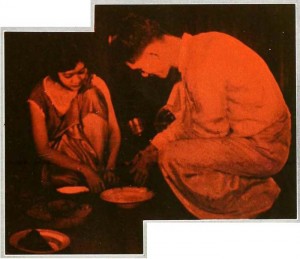
"The feature length photoplay produced in Siam by Nai Bernard Juangbhanich is one of the best of the serious dramatic efforts produced by amateurs. The story deals with the profligacy of a young Siamese who has been educated in Europe. Feeling superior to an ordinary business career, the young man determines to write, with the consequent search for "experience and atmosphere." In the succession of romantic episodes that follow, the theme of the tale is developed with extraordinary skill and, in spite of the manifest satire in several of the sequences, the picture includes many sincere glimpses into the social life and customs of the upper classes of Siam. Completely blinded and embittered as the result of his folly, the protagonist finally comes to terms with himself and actually does succeed as an author. Although this plot follows a familiar outline, Mr. Juangbhanich again proves that it is not the essential plot but the treatment that counts. The picture includes flaws both in photography and continuity but they appear unimportant in view of the general photographic quality and the epic nature of the treatment. It was recently screened for the staff of the Academy of Motion Picture Arts and Sciences." Movie Makers, Dec. 1930, 759, 787.
Total Pages: 299